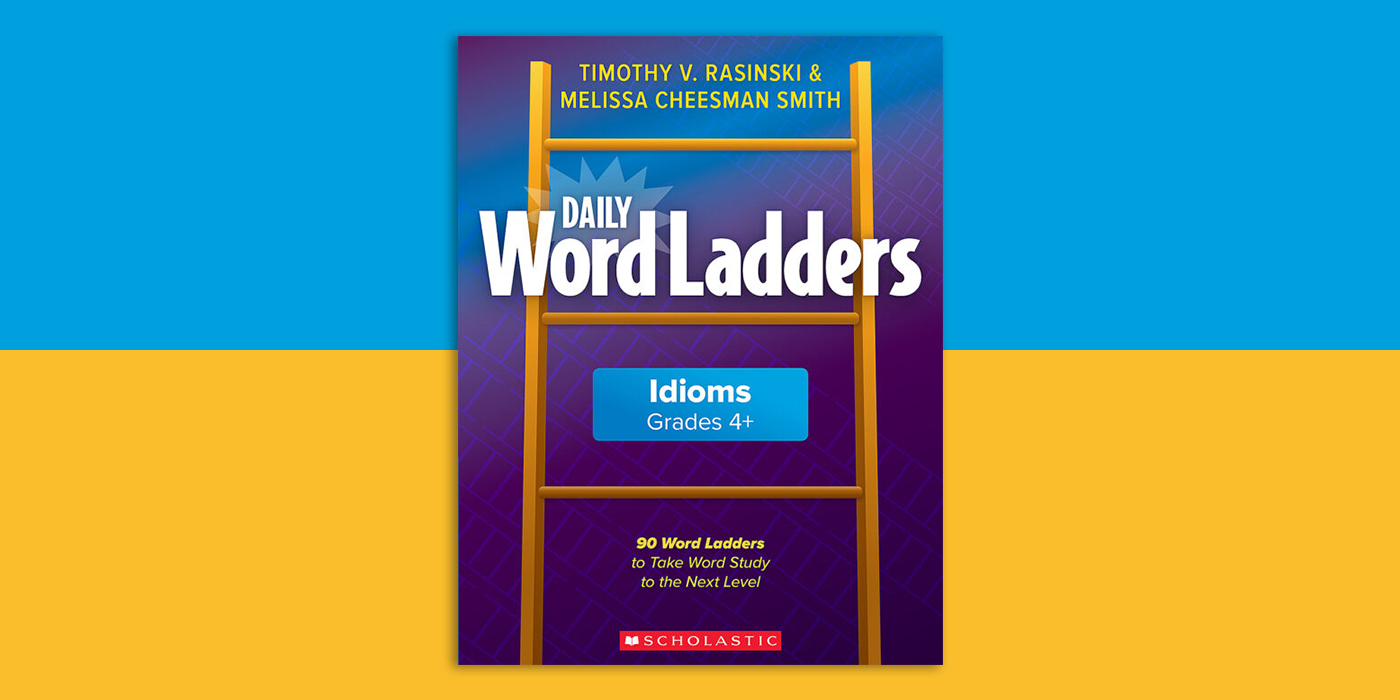Idioms and figurative language are part and parcel of oral and written language. (Did you notice the idiom part and parcel in the last sentence?) In fact, scholars estimate that over the course of a year, adults may use over a half million figures of speech to liven their speech and focus their written messages. The trouble is, children, by nature of their limited life experiences, often do not understand the figurative language they encounter in their reading or conversations.
In our book, Daily Word Ladders: Idioms, we provide 90 short word-study lessons called word ladders to help your students explore idiomatic expressions in a game-like manner. Although word ladders are playful in nature, they also integrate important language development with both receptive and expressive word study. The word ladders in our book integrate comprehension, vocabulary development, word solving, phonics, and spelling—all key your students’ success in learning to read.
Here’s how to build your own word ladder that helps you teach a common idiomatic expression:
Materials
- Two copies of a blank word ladder template
o Copy 1: This is your answer key (as well as a place to add teaching tips)
o Copy 2: This copy is for your students to solve!
Directions
1. Choose an idiomatic expression your students may encounter in their reading and writing (perhaps an idiom that will come up and has significance to the story in a read-aloud book). From the expression, choose two related words that aren’t too long. For example, silver-lining (every cloud has a silver lining).
2. On Copy 1, write one of the two words at the top of your ladder (top rung) and one word at the bottom of your ladder (bottom rung). List all the words in between, changing, adding, or taking away a letter or two at a time with each new word. These are the answers to your ladder!
3. Write two clues about each new word. In the clue box, include:
• a meaning clue.
• a letter clue (how to change the structure of the word).
For example, for the answer thrive, which is changed from the previous answer hive, a meaning and letter clue might be:
To do or grow very well (rhymes with strive).
Add two letters.
Note that clues can help students explore language and anchor meaning (e.g., generate synonyms, provide examples to deepen understanding, and introduce multiple meanings for a word). In the example above, you might make a note to ask students what conditions allow most plants to thrive.
4. Write the idiom and its meaning at the bottom of the ladder, underlining the answers (top and bottom words of the ladder). Or write a Mystery Sentence using those two words in a meaningful way.
5. When your Copy 1 ladder is complete, complete the following for students on Copy 2:
• fill in the first (bottom-rung) word and all the clue boxes.
• add the Mystery Sentence at the bottom, leaving blank lines where the top and bottom words fit.
• add the exact number of lines in each rung for the letters in each answer.
• add a relevant title.
Make copies of your Copy 2 page and display it on screen to guide students through it. As the class progresses up the ladder, take time to talk about the answers they generate for clues to deepen their word knowledge. Refer to your original word ladder answer key (Copy 1) as needed.
After solving the word ladder together, encourage students to celebrate finding the idiom they’ve learned in their reading and using the idiom in their writing and speech. Soon they’ll be “standing on their own two feet” and “hitting homeruns” with figurative language! To learn more about teaching your students about idioms and figurative language using word ladders, you can purchase our book here.
About the authors:
Timothy V. Rasinski, professor of literacy education at Kent State University, began his career as a classroom teacher. He has written and edited more than 50 books and 250 articles on reading education, including the seminal The Fluent Reader.
Melissa Cheesman Smith is an author of professional books and teacher at the elementary and college level, with a Master’s of Education in Curriculum and Instruction.
